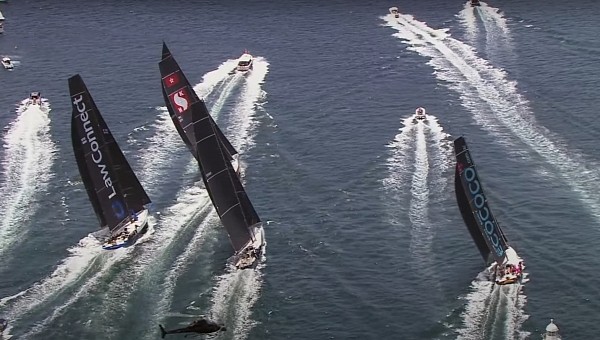In the States, Boxing Day does not hold the significance as it does in countries such as Australia, Canada, Australia, New Zealand, and other Commonwealth countries. However, December 26th is noteworthy if one is the seafaring type as it marks the start of the Sydney to Hobart Yacht Race.
The 630-nautical mile (1,170 km) race from Sydney, Australia, to Hobart, Tasmania, is considered to be one of the most difficult open ocean yacht races in the world. Sailors are often faced with extreme sea conditions, plunging temperatures, and gusting winds that will test the mettle of everyone aboard an entrant.
In fact, in 1998, a 'weather bomb' (a sudden, unexpected storm) hit the fleet of entrants with torrential rain, hurricane-force winds, and waves as high as 80 feet (24.38 meters), killing six sailors and forcing the rescue of 55 others. Of the 115 boats to have begun the race, only 44 reached the finish line.
The annual race for Australia's most coveted offshore sailing prize, The George Adams Tattersall Cup, was first held in 1945 with just nine boats and has been run every year since with the exception of 2020 due to the worldwide pandemic.
The fleet of entrants includes mostly sloops with a single mast, a fore-and-aft rigged mainsail, and a single jib or genoa headsail.
The winner is ultimately determined by a handicapping format depending on the length, shape, sail area of the yacht. However, most attention is paid to the first boat to cross the finish line (line honors), which is usually the newest and largest maxi-yacht in the fleet.
At first glance, the route looks simple enough, with a direct southwesterly jaunt from Sydney to Hobart, but it is anything but simple. Immediately departing from Sydney, boat and crew are subjected to the wildness of the Tasman Sea. And despite it being summer in the Southern Hemisphere southerly storms often make the race cold and bumpy.
As boats make their way along Australia's east coast, many will often retire in Eden, the last sheltered harbor before Flinders Island. Those that continue will round Cape Howe and be hit with the renowned winds blowing through the shallow and fierce Bass Strait. Once the fleet reaches Flinders Island off the northeastern tip of Tasmania, they will be met by fierce weather blowing into the Tasman Sea from the Southern Ocean before reaching Hobart.
It was once thought that completing the race in under 40 hours was impossible, however in 2017 LDV Comanche finished in a time of 33 hours, 15 minutes and 24 seconds.
This year, there are 115 boats participating in the race, including last year's line honors winner Black Jack and handicap winner Ichi Ban. Stay tuned, we will be following the race as it unfolds here on autoevolution.
In fact, in 1998, a 'weather bomb' (a sudden, unexpected storm) hit the fleet of entrants with torrential rain, hurricane-force winds, and waves as high as 80 feet (24.38 meters), killing six sailors and forcing the rescue of 55 others. Of the 115 boats to have begun the race, only 44 reached the finish line.
The annual race for Australia's most coveted offshore sailing prize, The George Adams Tattersall Cup, was first held in 1945 with just nine boats and has been run every year since with the exception of 2020 due to the worldwide pandemic.
The fleet of entrants includes mostly sloops with a single mast, a fore-and-aft rigged mainsail, and a single jib or genoa headsail.
The winner is ultimately determined by a handicapping format depending on the length, shape, sail area of the yacht. However, most attention is paid to the first boat to cross the finish line (line honors), which is usually the newest and largest maxi-yacht in the fleet.
At first glance, the route looks simple enough, with a direct southwesterly jaunt from Sydney to Hobart, but it is anything but simple. Immediately departing from Sydney, boat and crew are subjected to the wildness of the Tasman Sea. And despite it being summer in the Southern Hemisphere southerly storms often make the race cold and bumpy.
As boats make their way along Australia's east coast, many will often retire in Eden, the last sheltered harbor before Flinders Island. Those that continue will round Cape Howe and be hit with the renowned winds blowing through the shallow and fierce Bass Strait. Once the fleet reaches Flinders Island off the northeastern tip of Tasmania, they will be met by fierce weather blowing into the Tasman Sea from the Southern Ocean before reaching Hobart.
It was once thought that completing the race in under 40 hours was impossible, however in 2017 LDV Comanche finished in a time of 33 hours, 15 minutes and 24 seconds.
This year, there are 115 boats participating in the race, including last year's line honors winner Black Jack and handicap winner Ichi Ban. Stay tuned, we will be following the race as it unfolds here on autoevolution.













